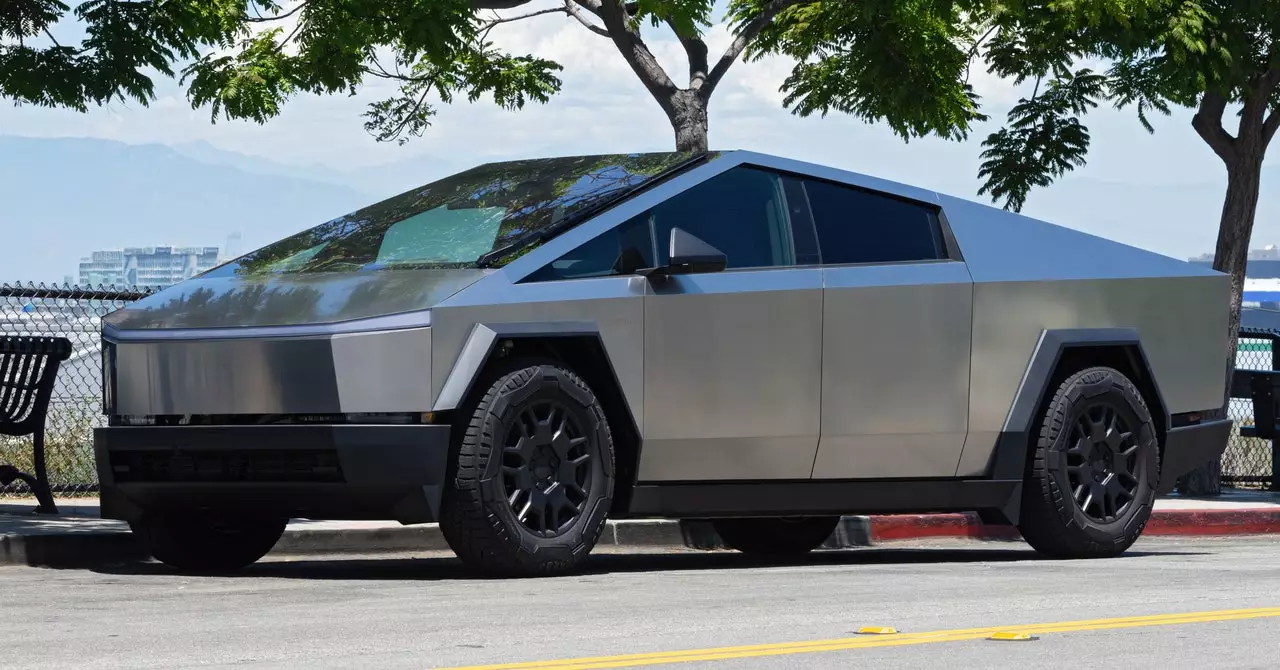Tesla’s ambition to revolutionize transportation is epitomized by its Cybertruck, particularly with the recent rollout of a groundbreaking hands-free driving feature. While technology enthusiasts and industry observers celebrate this advancement, a deeper inspection reveals potential implications and concerns surrounding the timeline, safety, and ethics of autonomous driving.
This morning, Tesla initiated an update that grants selected Cybertruck owners access to an ambitious “end-to-end highway driving” feature. According to Ashok Elluswamy, head of AI at Tesla, this enhancement utilizes a sophisticated neural net designed to autonomously navigate various aspects of highway travel. However, the feature is currently classified as “early access,” restricting usage to select owners who have opted into this innovative capability—tempering the excitement with the reality of exclusivity.
Elon Musk’s acknowledgment of this feature in a community forum underscores both the company’s progress and its reliance on evolving technology. Still, the broader rollout timeline remains vague, leading to questions about how many users will benefit from this cutting-edge feature and when it will be widely available.
Despite the advancements, one of the central concerns surrounding this hands-free operation relates to driver engagement. Tesla’s operational manuals specify that features like Full Self-Driving (FSD) necessitate constant driver attention. Reports of the system disengaging when users avert their gaze raise ethical questions about how the company is framing the capabilities of its vehicles. Critics argue that the marketing around FSD may create a false sense of security among users, potentially leading to misuse of the technology.
Tesla has faced criticism for falling short in educating users about the limits of its self-driving functions. With tragic incidents tied to its previous Autopilot iterations, there’s mounting anxiety over the responsibility of drivers and manufacturers in ensuring safe driving practices. Moreover, the National Highway Traffic Safety Administration’s findings, which include the involvement of Tesla’s Autopilot in fatal accidents, highlight the urgent need for stringent safeguards.
The Cybertruck is not only Tesla’s venture into the electric pickup market but also an emblem of broader challenges the company faces as competition increases. As various manufacturers join the electric vehicle race, Tesla’s previously unchallenged position in the market has started to shift. Recent delays due to the pandemic and engineering setbacks have only compounded those challenges, which include safety recalls for devices like accelerator pedals.
As the market grows crowded, the utility and reliability of Tesla’s autonomous features will critically determine its longevity and success in this sector. Musk’s statement that “the value of Tesla overwhelmingly is autonomy” reflects a strategic pivot aimed at reclaiming competitive advantage, especially as other automakers develop their electric and self-driving technologies.
The legal landscape surrounding self-driving cars is complex and continually evolving. Tesla recently faced scrutiny regarding consumer misrepresentation and safety with its existing Autopilot capabilities, leading to investigations that prompted a significant vehicle recall. As public concern mounts, the ethical implications of introducing highly autonomous systems raise vital questions about accountability—who is responsible when self-driving technology fails?
Musk’s plans to unveil a “Cybercab” this month signals Tesla’s ambition to solidify its presence in the self-driving taxi market, but it simultaneously raises alarm bells about adequacy in training and customer education. Tesla’s past record suggests the need for thorough collaboration with regulatory bodies to guarantee that safety regulations keep pace with technological advancements.
As Tesla shifts towards smarter driving technologies, it finds itself at a critical juncture. The excitement surrounding the Cybertruck’s new capabilities must be balanced with a commitment to user safety, transparent communication, and ethical practices. As society moves closer to embracing autonomous vehicles, manufacturers like Tesla must navigate this landscape thoughtfully to build a foundation for trust and reliability.
As this story unfolds, the implications of the Cybertruck’s hands-free feature will not only impact Tesla but can shape the future of autonomous transportation across the automotive industry. The coming weeks and months will prove crucial as users adapt to this technology, revealing whether Tesla’s ambitious vision for self-driving truly aligns with drivers’ realities.

